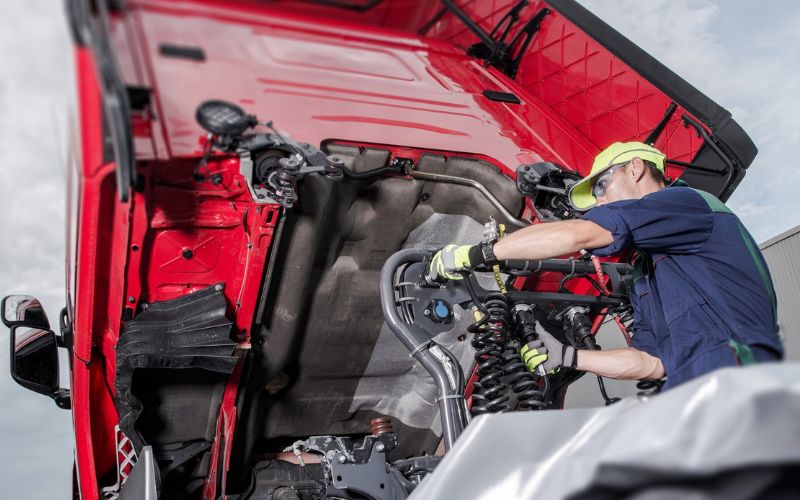
For more productive fleets, fleet managers need to minimize vehicle downtime. Fleet vehicles that aren't out working are costing your business money.
When a vehicle is down, either for costly repairs or for maintenance, it also means it is not available to run jobs and earn income, for a double impact on your fleet efficiency and expenses.

Monitoring your vehicles for usage and idle time is critical for ensuring you are managing downtime properly. Without measuring it, you won't know your baseline or whether your efforts are reducing it. Maintaining a fleet is costly, so it's worth making sure you are getting the most out of your vehicles.
Underutilized or overutilized vehicles impact the cost-effectiveness of your fleet. Keeping and maintaining more vehicles than you really need is a waste of money. However, a fleet manager does need enough vehicles to meet ongoing demand, surges in use, and to cover unexpected downtime.
Monitoring fleet data helps you establish a sustainable fleet size that accommodates maintenance, surges and unplanned downtime, and gain insights into underutilization or other areas for improvement.
Below are some fleet management tips to help you reduce unnecessary downtime.
Effective training and coaching for drivers not only improves safety and reduces the likelihood of an accident taking a vehicle out of action while it needs repairs, but better driving habits also reduces unnecessary wear and tear requiring more ongoing maintenance. Harsh braking, excessive speeding, and unnecessary idling is hard on a vehicle, and means more time at the mechanic’s shop.
With driver training and policies that ensure accountability for good driving habits, fleet managers can reduce fleet downtime and increase operational efficiency.
Part of this involves being able to track and monitor driver behaviour. With new telematics technologies and fleet safety management software, monitoring of behaviours and real-time coaching is possible.

Regular, effective inspections and keeping to a preventive maintenance schedule not only reduces vehicle maintenance costs and extends the lifetime of your vehicles, but it will reduce fleet downtime. Implementing clear maintenance policies and guidelines to make sure work is done consistently is essential.
Alternatively, with fleet management software solutions that tie into a vehicle's engine data, a predictive maintenance process can be used. This is the most effective way to reduce downtime. Effective predictive maintenance have become more feasible in recent years due to advancements in telematics technologies. Collection of vehicle engine data codes allow for analysis and predictions of potential failures, as well as prioritization of work to be done.
This strategy of preventive maintenance is unparalleled in ensuring maintenance tasks are done in the most optimal way possible so that time-consuming work in the garage is limited. Maintenance tasks can be completed when convenient, and kept to smaller maintenance rather than more costly repairs. The repair process is sped up, too, as the vehicle engine data codes help your fleet maintenance provider with diagnosis and repair needed.
With better fleet maintenance, you also won't have commercial vehicles unusable because of failed compliance inspections.
Be sure to also track how long repairs and maintenance take, plus whether they often run over their original time estimates. You may want to consider finding a new provider if your current one is a poor performer.
It may be tempting to avoid replacing vehicles in hopes of saving money. Leasing or buying new or newer vehicles is expensive, but older vehicles can start to need repairs too frequently, have poorer fuel efficiency, and break down more often. At a certain point, they detract from cost effective, efficient operations.
Monitoring service histories, odometer readings and other data will help you manage vehicle life cycles, and make more informed decisions about replacements.
Optimizing routes and route planning cuts down on wasteful downtime where drivers are sitting and waiting for jobs. Depending on the type of deliveries you make, automatic ETAs and notifications of arrival to the receiver helps ensure someone is there to receive the delivery, so drivers aren't waiting for this.

Make asset management and reducing downtime easier. Fleet managers have an easier time implementing all of the above best practices with the help of fleet management software.
Effective fleet management solutions reduce the administration required. They provide the necessary data and analysis to manage costs and vehicle productivity, as well as reducing downtime. Reports and metrics are presented meaningfully for informed decisions, with more comprehensive and more accurate data.
Connected Vehicles can help you with implementing effective fleet management solutions to enhance and support your fleet management practices, to boost your productivity and efficiency. We can discuss options to help you reduce unplanned downtime, from vehicle breakdowns or other causes.




[…] Fleet management is the vital coordination of vehicles, including cars and truck fleets. It's essential for optimizing fleet operations, cutting costs, boosting efficiency, enhancing safety, and ensuring legal compliance. […]